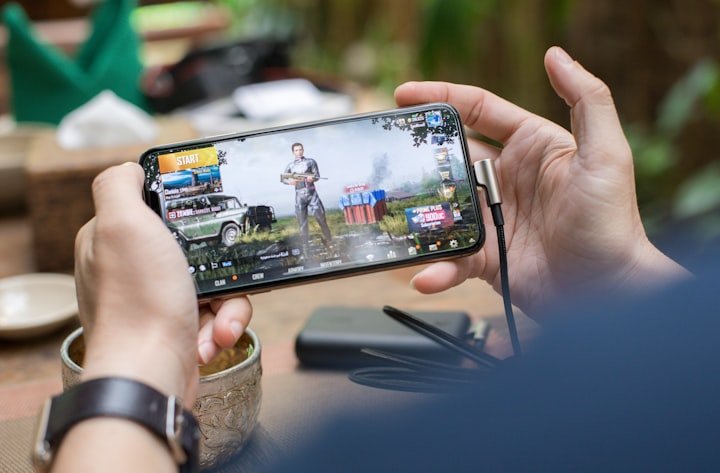Mobile gaming has undergone a remarkable transformation over the past decade. With the introduction of smartphones and the widespread availability of high-speed internet, mobile gaming has evolved from a casual pastime to a global cultural phenomenon. This revolution has dramatically reshaped the gaming industry, influencing game design, player behavior, and even the business models that drive game development. In this article, we explore the profound impact of mobile gaming on the gaming industry, its advantages, disadvantages, and the way it is shaping the future of gaming.
Key Takeaways
- Mobile gaming has revolutionized the gaming industry, making gaming accessible to a larger, more diverse audience.
- The free-to-play model has reshaped business models and introduced new revenue streams.
- Game design has become more streamlined and focused on accessibility, simplicity, and social interaction.
- While mobile gaming offers numerous benefits, including accessibility and social connectivity, it also faces challenges like monetization issues and addictive gameplay.
- The future of mobile gaming looks promising, with advancements in mobile technology and the increasing popularity of eSports ensuring a bright future for the sector.
Introduction to Mobile Gaming
Mobile gaming refers to playing video games on mobile devices, such as smartphones and tablets, which have increasingly become the primary platform for a large number of gamers worldwide. The accessibility, convenience, and affordability of mobile gaming have contributed to its widespread popularity, with billions of players engaging in mobile gaming experiences across various genres.
What began with simple, addictive games like Snake and Tetris has now blossomed into a multi-billion-dollar industry, with games spanning genres like action, puzzle, strategy, role-playing, and even massively multiplayer online games (MMOs). Clash of Clans, PUBG Mobile, and Candy Crush Saga are just a few examples of titles that have captivated millions and reshaped how we think about gaming.
The Growth of Mobile Gaming
Mobile gaming’s meteoric rise is undeniable. According to a report by Newzoo, mobile gaming has become the largest segment of the global gaming market, surpassing both console and PC gaming. As of 2025, the global mobile gaming market is expected to generate more than $100 billion in revenue, and mobile games are projected to make up over 50% of all gaming revenue worldwide.
This growth can be attributed to several factors:
- Smartphone Penetration: Mobile devices have become ubiquitous, with smartphones being owned by billions of people globally. The advent of affordable smartphones has allowed gaming to reach a wider, more diverse audience.
- Improved Game Quality: As mobile hardware has advanced, so have the quality and sophistication of mobile games. With faster processors, better graphics, and larger screens, mobile devices are capable of running games that were once limited to consoles or PCs.
- Free-to-Play Models: Many mobile games have adopted free-to-play (F2P) models, where players can download and play the game for free but are offered in-game purchases, advertisements, and other monetization strategies. This model has made games more accessible and appealing to a larger audience.
The combination of these factors has helped mobile gaming grow into one of the most profitable sectors of the gaming industry.
Impact on Game Design and Development
Mobile gaming has forced game developers to rethink traditional design principles, pushing the boundaries of creativity and user engagement. Some of the key ways in which mobile gaming has impacted game design and development include:
1. Simplicity and Accessibility
One of the most significant changes brought on by mobile gaming is the shift toward simplicity and accessibility. Games on consoles or PCs often require intricate controls, long tutorials, and a significant time commitment. In contrast, mobile games are designed to be easy to pick up and play, with simple touch-screen controls and short gameplay sessions.
Popular mobile games like Candy Crush Saga, Angry Birds, and Flappy Bird are built around the idea of quick, accessible gameplay that can be played in short bursts. This design philosophy has been embraced across many genres, ensuring that mobile games are both fun and accessible for players of all ages and skill levels.
2. Social Integration
Mobile games are increasingly social, leveraging the power of social media platforms and in-game networking to keep players engaged. Games such as FarmVille, Clash Royale, and Pokemon GO encourage social interaction, whether through sharing achievements on Facebook, challenging friends to competitions, or participating in online multiplayer battles.
This emphasis on social integration has not only increased player engagement but also extended the lifespan of mobile games. Players can compete or cooperate with others, share tips and tricks, and even join online communities, creating a sense of belonging and fostering an environment where players return to the game regularly.
3. Microtransactions and Free-to-Play Models
The free-to-play (F2P) model has become the dominant business model in mobile gaming. Rather than charging players an upfront fee to purchase a game, developers offer free access to the game while monetizing through in-app purchases, ads, or premium content.
This model has been highly successful, particularly for mobile games, as it lowers the barrier to entry and attracts a larger player base. Popular mobile games like Fortnite, Candy Crush, and Clash of Clans have generated billions of dollars in revenue from microtransactions.
While microtransactions have allowed many mobile games to thrive, they have also sparked controversy. Critics argue that F2P games can exploit players by encouraging them to spend money on in-game items that provide competitive advantages, leading to a “pay-to-win” model. Despite these concerns, the F2P model remains the primary revenue driver for mobile games.
4. Game Distribution and Updates
Unlike traditional console or PC games, which rely on physical media or digital storefronts like Steam, mobile games are distributed through app stores such as Google Play and the Apple App Store. This shift has allowed for more frequent updates, quick patches, and immediate access to new content for players.
Developers can roll out updates quickly and efficiently, ensuring that games remain fresh and engaging. This model also enables developers to fix bugs, tweak gameplay mechanics, and introduce new content in real-time. The ability to update and refresh games regularly has contributed to the longevity and success of mobile games.
A Changing Landscape: From Casual to Core Gaming
In the early days of mobile gaming, the market was largely defined by simple, casual games designed for short bursts of entertainment. Games like Tetris, Snake, and Bejeweled were the dominant titles, targeting the casual gamer who could enjoy a few minutes of gameplay during a commute or lunch break.
However, mobile gaming has evolved significantly since then. Today, mobile games span all genres—from casual puzzle games and endless runners to complex role-playing games (RPGs), multiplayer online battle arenas (MOBAs), and massively multiplayer online games (MMOs). Games like PUBG Mobile, Fortnite Mobile, and Genshin Impact have successfully translated core gaming experiences typically seen on PCs and consoles to mobile platforms, often with the same depth and complexity, albeit with some modifications for mobile playability.
Mobile Gaming: A Global Phenomenon
One of the most remarkable aspects of mobile gaming is its global reach. While console and PC gaming markets are heavily concentrated in certain regions (such as North America, Europe, and East Asia), mobile gaming has a far more global footprint. The affordability of smartphones, especially in emerging markets, has led to mobile gaming becoming the primary form of entertainment for many people worldwide.
In countries like India, Brazil, and various parts of Africa, where the cost of gaming consoles and high-end PCs can be prohibitive, smartphones have become the go-to gaming platform. For many players in these regions, mobile games provide an accessible entry point into the world of gaming. This phenomenon has expanded the gaming industry’s audience significantly, contributing to the surge in global gaming revenue.
Economic Impact of Mobile Gaming
The economic impact of mobile gaming is far-reaching, influencing not just game developers but also the wider tech industry, job markets, and global economies.
1. Job Creation
The mobile gaming industry has generated thousands of jobs worldwide, ranging from game developers and designers to marketing professionals, community managers, and customer support teams. The rise of mobile gaming has also fueled job creation in related industries, such as mobile app development, hardware manufacturing, and advertising.
2. Global Revenue Generation
As mentioned earlier, mobile gaming is expected to generate over $100 billion in 2025. This has made mobile gaming the most significant revenue source in the gaming industry. Companies like Tencent, Supercell, and King have emerged as major players, with mobile gaming contributing to their multi-billion-dollar earnings.
3. Advertising and Sponsorships
Mobile gaming has also opened up new revenue streams through advertising and sponsorships. In-app ads, brand collaborations, and sponsored content have become essential elements of mobile gaming, particularly for free-to-play games. This shift has created new opportunities for marketers to target specific audiences through in-game ads and product placements.
4. The Rise of eSports and Mobile Tournaments
eSports, the competitive gaming industry, has also embraced mobile gaming. Games like PUBG Mobile, Call of Duty Mobile, and Arena of Valor have introduced mobile tournaments with significant cash prizes, broadcasting platforms like Twitch and YouTube, and sponsorships from major brands. This has provided a new avenue for mobile gamers to participate in competitive play and has driven growth in the eSports sector.
Advantages of Mobile Gaming
Mobile gaming has brought numerous advantages to the gaming industry and the gaming community:
- Accessibility: Mobile games can be played anytime, anywhere, making gaming more accessible for people who might not have access to high-end gaming consoles or PCs.
- Casual Gaming: Mobile games appeal to a broad audience, including casual gamers who might not have the time or inclination to invest in longer gaming experiences.
- Social Connections: Many mobile games promote social interaction, allowing players to connect, collaborate, and compete with friends or strangers worldwide.
- Frequent Updates and Content: Developers can roll out regular updates and introduce fresh content, keeping players engaged and maintaining long-term interest.
Disadvantages of Mobile Gaming
Despite its many advantages, mobile gaming also has its drawbacks:
- Monetization Concerns: The prevalence of in-app purchases and ads can lead to frustration for players who are unwilling or unable to spend money.
- Limited Graphics and Gameplay: While mobile hardware has improved, it still can’t match the graphical power and performance of consoles and PCs.
- Shorter Gaming Sessions: Mobile games are often designed for short, quick sessions, which can limit the depth and complexity of gameplay.
- Addiction and Over-Spending: The convenience and addictive nature of mobile games, especially those with microtransactions, can lead to excessive spending and time consumption.
Conclusion
The impact of mobile gaming on the gaming industry has been profound, with mobile games revolutionizing how players interact with games and how developers approach game design. With billions of players worldwide and a constantly growing market, mobile gaming has become an essential part of the gaming ecosystem, shaping the future of interactive play.
FAQs About Mobile Gaming
- What are the most popular mobile game genres?
- The most popular mobile game genres include puzzle games, action games, strategy games, role-playing games (RPGs), and casual games like match-3.
- Why are mobile games so popular?
- Mobile games are popular because they are easily accessible, offer quick and engaging gameplay, and can be played on the go without needing specialized hardware.
- Can mobile games compete with console and PC games?
- While mobile games may not match the graphical power of consoles and PCs, they compete in terms of accessibility, ease of play, and affordability. Many players enjoy mobile games for their convenience.
- How do mobile games make money?
- Mobile games make money through microtransactions (in-app purchases), ads, and premium content. The free-to-play model with optional purchases is the most common revenue model.
- What is the future of mobile gaming?
- The future of mobile gaming looks promising, with advancements in mobile hardware, 5G connectivity, and augmented reality (AR) technologies creating new opportunities for developers and players alike.
- Are mobile games good for competitive gaming (eSports)?
- Yes, mobile games like PUBG Mobile and Arena of Valor have introduced eSports tournaments with significant prize money, attracting professional players and audiences.
- How do developers optimize mobile games for different devices?
- Developers use optimization techniques, such as scaling graphics, adjusting performance settings, and testing on various devices, to ensure that mobile games run smoothly on different screen sizes and hardware.



